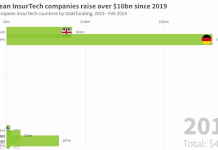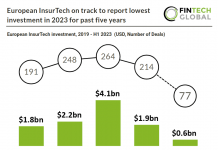Despite firms having robust and widespread risk management and compliance processes in place, there is still a strong threat from falling victim to fraud.
Quantexa, a data and analytics software developer, has outlined the benefits firms can experience through continuous KYC monitoring.
It stated that regulators have increased the number of cases brought and size of penalties levied for violations of AML and KYC due diligence requirements. As a result, firms are looking to move towards a proactive KYC approach, which means continuous KYC monitoring.
Another problem firms are facing with their compliance processes is the rising costs. In 2016, the U.S. Treasury Department’s Financial Crimes Enforcement Network (FinCEN) estimated the ten-year discounted cost of compliance at $700m to $1.5bn. Almost half of this cost was estimated to fall on banks and other regulated financial institutions, Quantexa explained. To combat the rising costs, firms are seeking to automate their KYC processes, which can reduce due diligence processes by multiple hours.
Another driving point behind the move towards continuous KYC processes comes from FinCEN itself. The body has encouraged banks to complete customer analysis and monitoring on an ongoing basis. Through this it believes suspicious activity can be found much quicker.
Similarly, the European Banking Authority recently updated its CDD guidelines that calls for firms to keep customer information “up to date”, with a view to understand if risks have changed.
Continuous KYC
Quantexa explained that a continuous monitoring approach, which uses analytic tools to monitor a combination of internal and external data, is able to quickly identify material changes with a risk profile of a customer, supplier or business partner. This rapidly accelerates the decision making times.
It said, “A frequent question from organisations evaluating KYC process changes is: “Won’t continuous monitoring actually create more work for our operations and risk management teams by bringing more events, alerts, and status changes to their attention for review?”
“In fact, a more automated KYC and CDD process will simplify the work of those teams, bringing much greater consistency to the process, auto-updating low-risk changes while escalating changes that need further analysis.”
It continued to state that continuous monitoring’s main advantages are felt from using network generation and link analysis to evaluate the network risk of customers and suppliers. This includes where they do business, their suppliers and counterparties, beneficial owners and top managers, relationships with politically exposed persons, supply chain routes, adverse media coverage, ownership charges and more.
Quantexa concluded, “Based on all these factors, accelerating the digital automation of KYC and supplier risk management offers many advantages. Continuous monitoring will not only improve compliance with relevant regulations but will also improve efficiency and customer experience, reduce risk and cut costs.”
Copyright © 2022 FinTech Global











